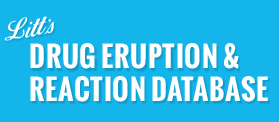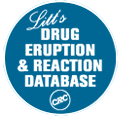About the book
This widely acclaimed book has evolved and expanded into the Litt's Drug Eruption & Reaction Manual, an authoritative guide to adverse drug reactions and reaction patterns. With improved adverse events listings and a comprehensive classification system for reaction patterns, Litt's Manual is a valuable resource for anyone dealing with drug prescription.
The intuitive look-up format and comprehensive coverage make it a helpful diagnostic aid for medical practitioners and an important reference tool for educators, lecturers, pharmacists and students. In retaining its unique focus on drug eruptions, which is much beloved by dermatologists, this edition is also essential for anyone researching, teaching and practising cutaneous medicine.
How can the book help with practice?
- Look at the drug profile to see if a particular drug is known to cause the reaction; check in the list of drugs that cause important reactions to see if other drugs in the class might not cause it.
EXAMPLE: a patient prescribed with a macrolide antibiotic (clarithromycin) presented with purpura. The drug profile shows there are reports of this; the list of drugs shows it is reported for some other macrolide antibiotics (so there would be no point in changing to those), but not for roxithromycin or telithromycin, so those could be considered if appropriate for the initial indication of infection. - Look at the class reaction tables to see if a reaction is attested for all drugs in that class, for a majority, or is specific to one or two.
EXAMPLE: A patient prescribed a statin presented with eczema. The class reaction tables show that this reaction has not been attested for fluvastatin, lovastatin, pitavastatin or rosuvastatin so those could be considered as substitutes.
EXAMPLE: If the same patient had presented with pruritus, the tables show that this has been attested for a majority of drugs in the class, suggesting that this is possibly a class reaction. However there are no reports for fluvastatin or pitavastatin (as yet), so one of these may be the most suitable alternative.
The 31st edition, for 2025, is published in both print and electronic forms. Order a copy at: https://www.routledge.com/Litts-Drug-Eruption--Reaction-Manual/Shear/p/book/9781032942582
The current edition of this classic text features in addition tables of reactions caused by classes of drugs, and shows at a glance whether a reaction is attested for all drugs in a class, for a majority of them, for a significant minority of them, or not at all. As an example, the table for calcium channel blockers is shown here.
A table of recommendations from various sources of pharmacogenomic data for the prevention of cutaneous adverse drug reactions is shown here.

